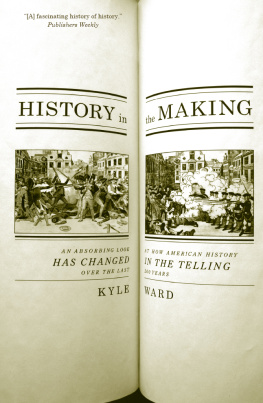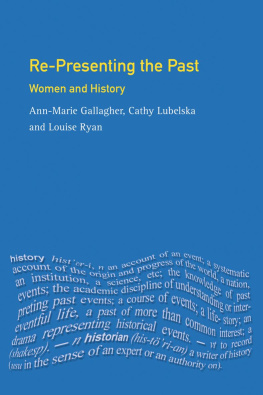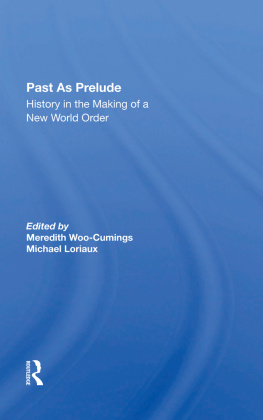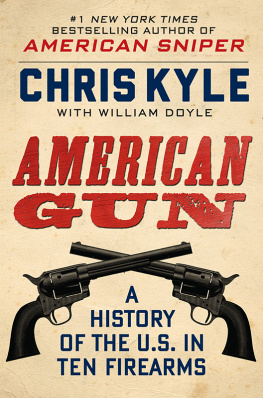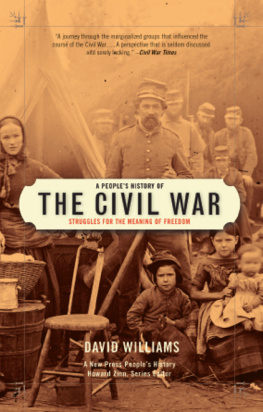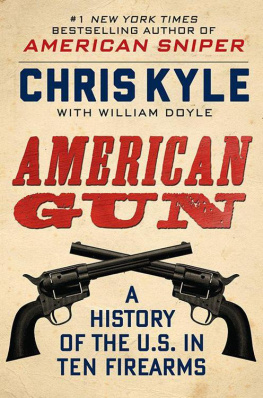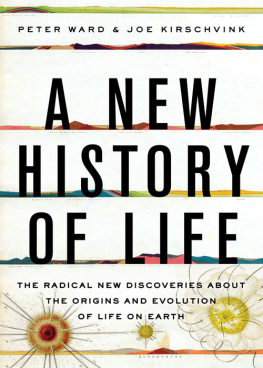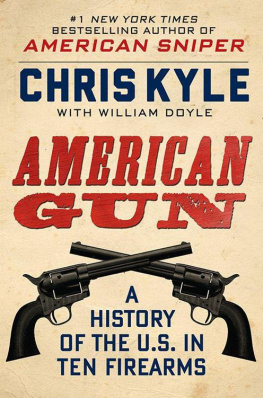Pagebreaks of the print version

Also by Kyle Ward
History Lessons: How Textbooks from Around the World Portray U.S. History (with Dana Lindaman)
In the Shadow of Glory: The Thirteenth Minnesota in the Spanish-American and Philippine-American Wars, 18981899
HISTORY
An Absorbing Look at How American History Has
Changed in the Telling over the Last 200 Years
IN THE MAKING

Kyle Ward

2006 by Kyle Ward
All rights reserved.
No part of this book may be reproduced, in any form, without written permission from the publisher.
Requests for permission to reproduce selections from this book should be mailed to: Permissions Department, The New Press, 38 Greene Street, New York, NY 10013.
Published in the United States by The New Press, New York, 2006
Distributed by W. W. Norton & Company, Inc., New York
LIBRARY OF CONGRESS CATALOGING-IN-PUBLICATION DATA
Ward, Kyle Roy, 1969
History in the making: an absorbing look at how American history has changed in the telling over the last 200 years / Kyle Ward.
p. cm.
Includes bibliographical references and index.
ISBN-13: 978-1-59558-044-3 (hc.)
ISBN-10: 1-59558-044-1 (hc.)
1. United StatesHistoryTextbooks. 2. United StatesHistoryTextbooksEvaluation. 3. United StatesHistoriography. I. Title.
E175.85.W37 2006
973.07dc22
2006008886
The New Press was established in 1990 as a not-for-profit alternative to the large, commercial publishing houses currently dominating the book publishing industry. The New Press operates in the public interest rather than for private gain, and is committed to publishing, in innovative ways, works of educational, cultural, and community value that are often deemed insufficiently profitable.
www.thenewpress.com
Composition by dix!
This book was set in Minister Light
To Annikawith all my love
ACKNOWLEDGMENTS
I would like to thank the following people, who helped me complete this project: Bruce Beesley, Jenni Roman, Dr. Paul Bloom, James Loewen, Adam Clark, and Marita (Bach) Pinkstaff. I also need to thank Melissa Richards and Marc Favreau of The New Press for their extraordinary assistance in putting this project together.
And a very special thanks to Dr. David Vancil and Dennis Vetrovec at the Indiana State University Library (ISU) Special Collections Department. These two men and their department were invaluable to my research, to say the least. The ISU Special Collections Department currently houses thirteen major collections, two of which have international importance: the Eugene V. Debs Collection and the Cordell Collection of Dictionaries. Other collections have a more regional or national focus, such as the Cunningham, the Floyd Family, and the Walker collections. The Cunningham Collection contains early or significant works in American education on practice and theory, while the Floyd Family and Walker collections contain over twenty-five hundred cataloged textbooks. While these collections cover all subject areas, the largest number of books are in the fields of history and English.
EDITORS NOTE
It would have been a nearly impossible task to read every U.S. history textbook published between 17941999. In some instances, textbooks from certain eras (especially the late 1700s and early 1800s) were chosen simply because I could locate them. Although there are some sketchy accounts as to how popular a textbook might have been (usually determined by how many editions were published), there was no way of knowing how widely used and adopted a textbook was. Rather, I argue that each textbook I looked at had to be accepted and adopted by the author, the publisher, a school administration, at least one teacher, and the parents of at least a few communities. I therefore assumed that the material found in the textbook was approved and accepted as solid historical fact at the time it was published.
There are four major reasons why I undertook this project, and why I believe it is important for people to understand not only our history but also the way this history is presented to students.
First, it is essential to understand that U.S. history textbooks to some extent represent our collective stories, passed down and agreed on by society. When we pick up a U.S. history textbook used today or 150 years ago, we know that people of that time period could read that text and agree that what was written captures what our nation is about. A textbook today that would erroneously discuss how the former Soviet Union used the atomic bomb on Japan to end World War II just would not be accepted, since it is not a socially agreed upon historical story and hence would not be adopted for use.
The second reason for undertaking this research was to see how, or even if, the stories students learn about the past have changed over time. Understanding that our history textbooks reflect societys attitudes and beliefs, and thus hopefully influence future generations, I wanted to see how some of these events were portrayed to American students at different times in our nations history. If we understand that our history was written about people who had personal biases and by people with these same biases, then we are better able to open up the dialogue and begin to debate these different perspectives as well as their impact on how history is taught and understood.
The third reason for this book is to make people aware of the fact that while history textbooks are written in order to affect how students learn about the past, the textbooks themselves are actually written in the present. In other words, what we find in our textbooks today often tells us more about the time in which they were written than the historical events that they are trying to portray.
One also has to assume that much like students today, students in the past accepted what their textbooks told them as fact, never questioning what the expert author is telling them. In her book on history textbooks written in the twentieth century, Frances Fitzgerald claims that those of us who grew up in the fifties believed in the permanence of our American history textbooks. To us as children, those texts were the truth of things: They were American history. The U.S. history textbook was, and for many still is, the authority in the classroom. There is to be no debate, and no questioning of what the textbook tells us.
The fourth desired aim of this work is to get people to begin to think in a historiographical way. History has to be looked at as if it has layers. First, students of history have to understand that an event took place with real characters, all of whom had their own biases and perspectives. Next, they must appreciate that this event has been studied and analyzed by historians, often writing years after the fact. In order to truly grasp the nuances of history, one needs to understand that while these authors were (and are) doing their research and writing, they were also being influenced by the current social, political, economic, and cultural events taking place in what they considered the present.
While U.S. history textbooks have been published up until the present day, and they are continually updated, I decided to stop my research at 1999. I discovered that textbook stories usually take at least a decade or more to reflect any substantial change in the historiography; in my analysis, textbooks published in 2005 have changed very little since 1999. Imagine a 2005 textbook discussing the Clinton/Lewinsky scandal and its political impact. In less then a decade, this story has not changed much, if at all. Thirty years from now, in ways that we could not possibly judge with any accuracy, we may look back on this scandal and judge it in a very different light.

